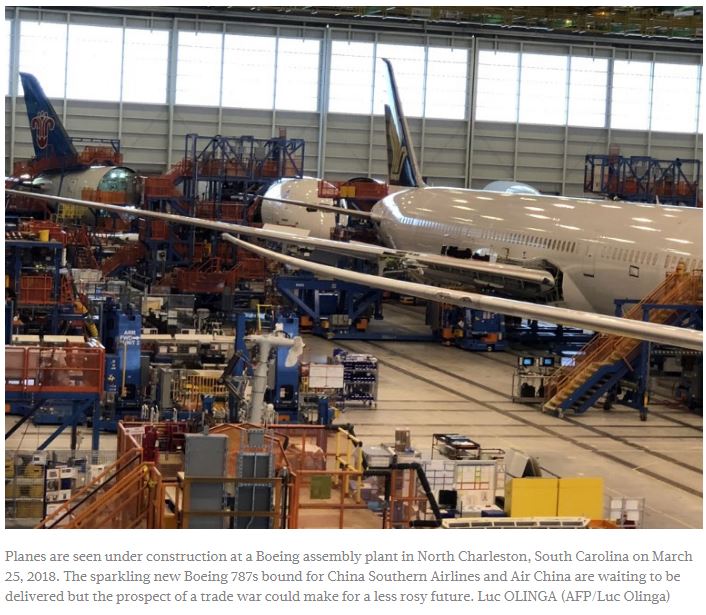Aircraft manufacturers looks to Southeast Asia
Boeing Co. of the United States and other major international aircraft makers are moving to build manufacturing bases in Southeast Asia.
Thailand and Malaysia are eager to attract industries from overseas, in the hope of developing their economies. This is presenting opportunities for small and midsized Japanese companies that manufacture airplane parts or provide other services to start operations in the region.
On-site inspection
Representatives of 30 small and midsized companies from Japan gathered in Bangkok on Feb. 12 to explore the possibility of starting business there. They listened to Thai government officials discuss investment plans and inspected local companies.
“There are issues with the infrastructure environment and other things, but we hope to incorporate the vigor of this growth market,” said Tomaru Nakamura, managing director of Kyoto-based Asahi Kinzoku Kogyo Inc., which provides such services as special surface processing for airplane parts.
Thailand is planning to build a base for the maintenance, repair and overhaul (MRO) of aircraft in a special economic zone. Demand for MRO services is growing due to an increase in the number of airplanes flying in the region.
Europe’s Airbus has already decided to start operations in the zone, with Boeing Co., Rolls-Royce of Britain and other companies also considering investments there.
The Thai government hopes Japanese companies will help set up a center for the aircraft industry the way they did for the auto industry, a factor contributing to Thailand’s economic development.
“The Japanese automobile makers who started business in Southeast Asia before others led the growth of auto manufacturing there,” said a vice secretary general in charge of special zone projects. “In aircraft manufacturing as well, we want to learn from Japan’s advanced technological skills, its ability to train personnel who maintain quality levels and other attributes.”
Topping N. America, Europe
The volume of airline passenger transportation in the Asia-Pacific region surpassed that in North America and Europe in 2017, according to the Japan Aircraft Development Corporation. Airbus and others believe about 40,000 airplanes will be needed in the next 20 years, most of which will be supplied to the Asia-Pacific region.
While this could be a boon for parts makers, airplane parts must comply with strict safety standards. The need to obtain safety certifications for all parts is a major barrier to entry.
Japanese companies hope to meet these demands by quickly building a parts supply network that utilizes the area’s cost-competitiveness.
Other nations as well
Other Southeast Asian nations are also trying to draw aircraft-related businesses from overseas, a move resulting in fierce competition with rivals in the region.
Singapore has been a leader in attracting foreign capital in the MRO field, with its hub airport that sees more than 65 million users annually.
Malaysia and Indonesia are actively trying to increase investments from overseas by highlighting their advantages, such as preferential treatment for foreign investments and low labor costs.
Asia’s largest low-cost carrier, AirAsia Group Bhd., is headquartered in Malaysia.
“MRO businesses have helped to grow related industries such as parts manufacturing and to create jobs,” said an official from the Malaysian Investment Development Authority.
Source: https://www.thejakartapost.com/news/2019/02/20/aircraft-manufacturers-looks-to-southeast-asia.html


 Thailand
Thailand




